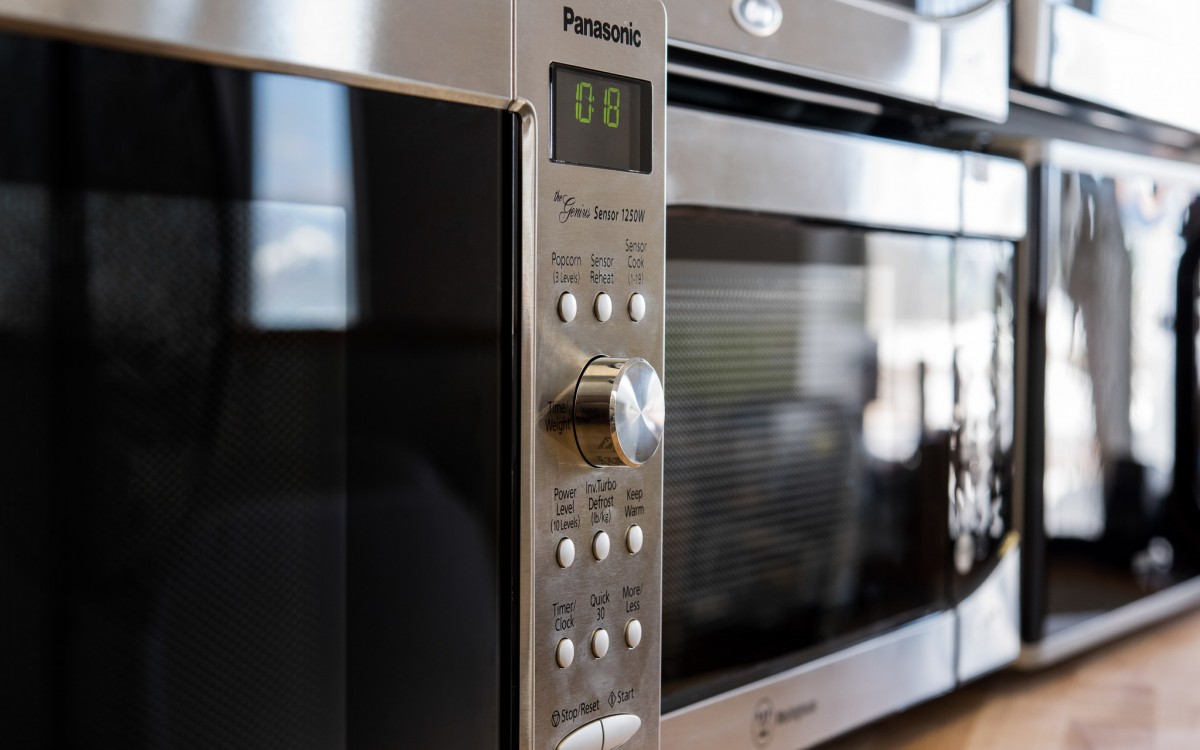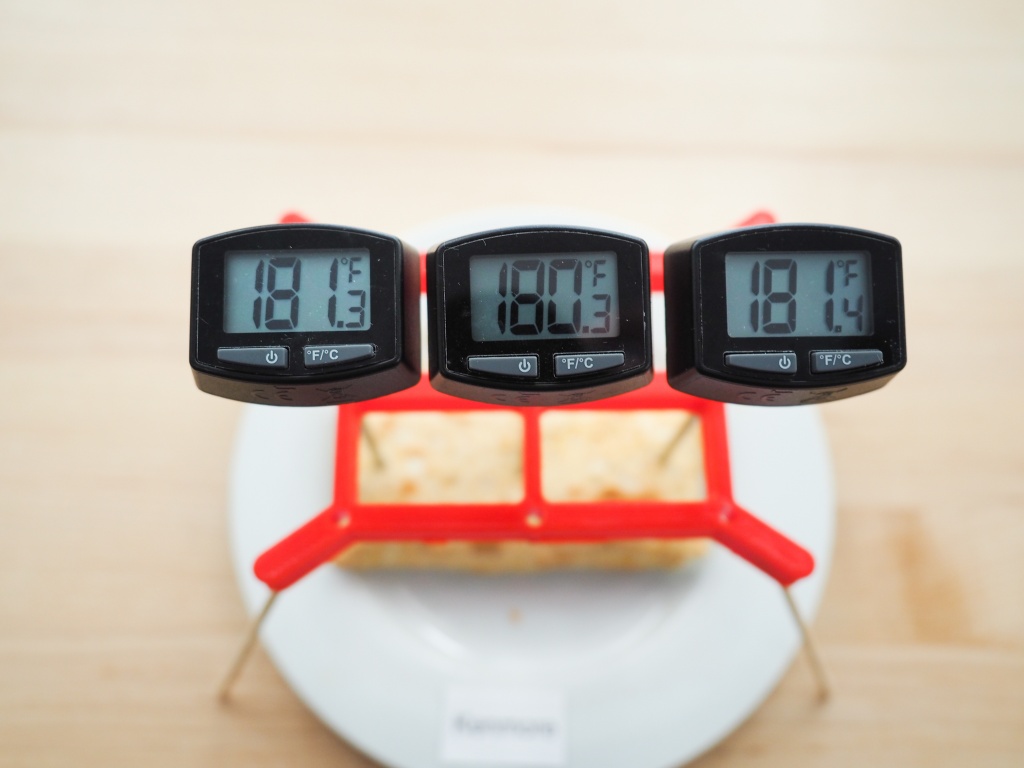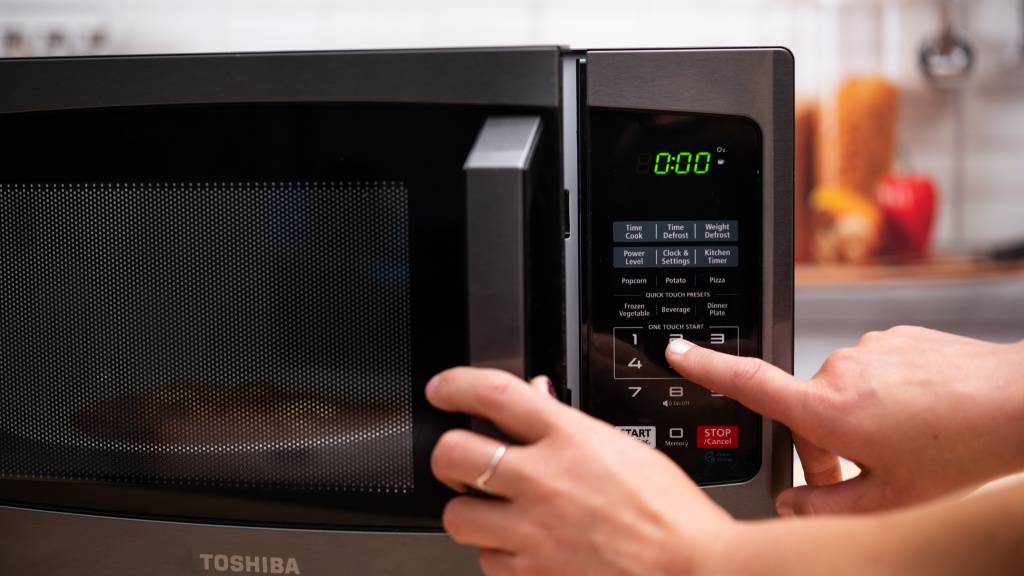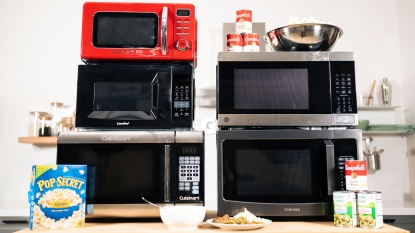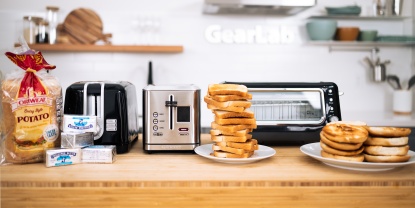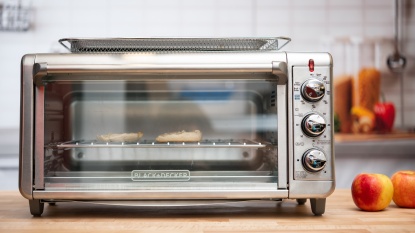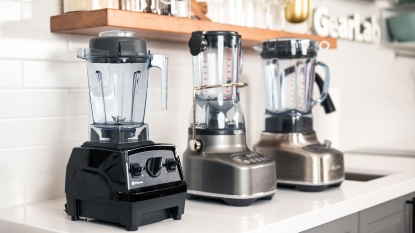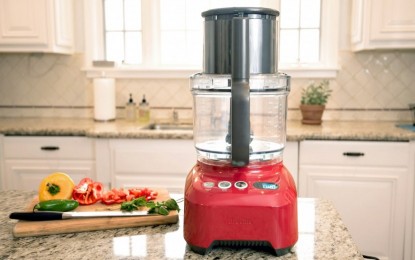The microwave. The ubiquitous box of radiation that has become a solid staple in kitchens worldwide. While you know that a microwave makes your food hot, do you know how it really works, or is it just a magic black box that produces popcorn? After buying and testing 9 of the top models currently available, we compiled this guide to help you sort through the different types of microwaves available, to explain exactly what they are you doing to your food, and — for those of you concerned with potential risks caused by these products — to highlight some of the safety standards that are currently in place.
Keep reading to find out what a microwave does, what safety standards are currently in place, and for our step-by-step guide to selecting the perfect microwave for you, whether you are shopping for a luxury kitchen or a cramped college dorm room. Interested in how a specific model did? Our comprehensive best microwave review details which models took home the top scores and why.
Step 1: How Big A Box Do You Want?
The first step in selecting the microwave that matches your needs is to assess how much space you have available. There is a drastic size difference between a 0.7 cubic foot and a 2.2 cubic foot model. A larger model may dominate a tiny kitchen, which might be perfectly acceptable if your diet is entirely comprised of frozen burritos and Hot Pockets, but most people still want to be able to use the rest of their kitchen.
At this point, you may be looking at the different power ratings of these products, thinking that larger is better. However, in our tests, we found that there was very little correlation between the power rating and heating performance. It was much more important to select a model that heats food evenly, rather than automatically picking the most powerful model.
Step 2: Do You Only Cook With A Microwave?
Once you've selected what size microwave to get, it's time to think more about what you will cook with it. Regardless of what you're planning on zapping, you should look for a microwave that is convenient and easy to use. This would include a model that won't slide around on a smooth countertop easily, an interior light and a door that is reasonably easy to see through to monitor your food, and an intuitive interface. We found that we greatly preferred models that had a keypad over a dial as an interface, and we would flat out refuse to buy a product that didn't at least have a "+30 Seconds" button.
If the main use for your microwave is heating up various pre-made frozen foods, then you should consider the models that did best in our heating tests. We evaluated the performance with a wide variety of foods, and you should pick the model that did the best at your preferred type of food. Frozen burritos proved oddly problematic for many of these products, so that test is worth paying particular attention to.
Most people are not using a microwave as their sole cooking method. Many folks use these appliances as a helpful aid for more conventional styles of cooking. For example, it can be used to rapidly defrost frozen food before sauteing or to quickly bake some potatoes to pair with a steak or roast. If this sounds more like your typical cooking style, then you should peruse the results of our defrosting metric to see which models did the best at defrosting by weight. You may also want to consider a model that scored well in terms of preset effectiveness. Tossing a potato in and having it perfectly baked a few minutes later can be a lifesaver when trying to cook a quick dinner.
Step 3: Willing To Spend For Style Or Bonus Features?
The final thing to consider when you are narrowing down your selection is what extra features are you willing to pay for, or is there a certain aesthetic that your new appliance must have. For example, some of the sleekest and most eye-catching models cost over double the bargain ones, but it may be worth it to you to match the rest of your kitchen. Some models have unique features, such as a specific setting for frozen pocket sandwiches, or Hot Pockets. It may be well worth the extra money if you are a Hot Pocket fiend, but best forgone if those aren't part of your regular diet.
What Does A Microwave Actually Do?
A microwave oven is a kitchen appliance used to quickly and easily heat food. It does this by exposing the food inside to microwave radiation. This causes polar molecules, like water, to rotate and generate thermal energy, warming your food! While this technology isn't used too much in commercial kitchens, it is great for household use and can easily handle heating up last night's leftovers or a pre-made frozen lasagna or burrito.
So Does This Make My Food Radioactive? I Think I'm Starting To Glow…
Regardless of what you may have heard, eating that microwave burrito or standing in the same room with it while it is running won't make you glow in the dark or grant you inexplicable superpowers. The FDA has very strict rules governing the radiation shielding on microwaves, and the majority of injuries caused by these products are primarily heat-related, such as burns from overheated foods or hot containers.
However, there have been a few very unusual radiation-related incidents, usually through improper servicing or some sort of damage or extremely unusual circumstances. You should never use a microwave that will operate with the door open, or that has a door that is bent, damaged, or warped. In addition, in the interest of an extra precaution, the FDA recommends that you don't stand directly against the oven for long periods of time. For more information, consult the FDA's page on Microwave Oven Radiation and the risks associated with it.
While being injured by the radiation is highly unlikely, it is much more common to receive a thermal injury. You can minimize this risk by always following the manufacturer's instructions, only using microwave safe cookware, and by not heating any liquids longer than necessary.
Types Of Microwaves
All microwaves are not created equal, though it may appear that way. While the underlying technological principles are roughly the same, there are three main types currently available on the market today.
Conventional
Conventional microwaves have interior technology reminiscent of the original microwave patented by Raytheon shortly after World War II. These models have an adjustable power level, but achieve this by cycling between 100% and 0% power. The occurs quickly enough that it's hard to notice, and the ratio of on to off is what determines the power level.
Inverter
The newest advancement in microwaves, inverter technology modulates the actual power output of the microwave, allowing you to heat something at 50% consistently, compared to cycling between completely on and off an even amount, like a conventional microwave one.
Combination
Combination machines combine multiple types of heating technology, usually a microwave and a convection oven. This allows you to get the speedy interior heating caused by a microwave, and the surface browning from the hot air of the convection oven.
Conclusion
Every microwave on the market will heat food, given enough time, and the majority will suffice for most people's needs. However, finding the best microwave that perfectly matches your budget, space constraints, and heating needs can be challenging. Hopefully, this guide has helped you identify the important aspects to look for, or at least alleviated some concerns about starting to glow in the dark from standing next to your microwave while it's popping popcorn.

